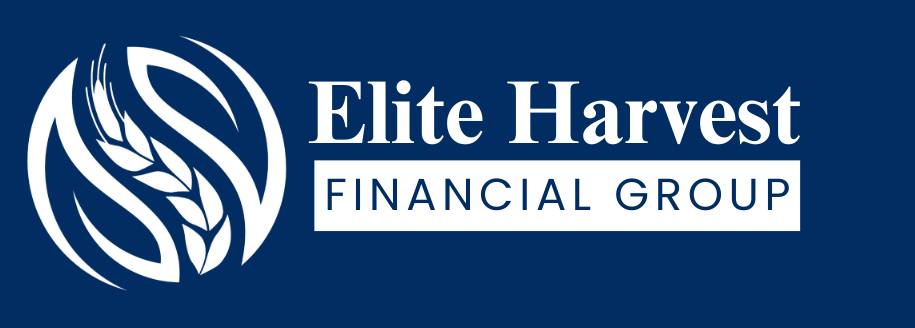Are you sitting on thousands of dollars in home equity while struggling to fund your renovation project or manage high-interest debt? A home equity line of credit might be your answer.
With Whitby’s housing market seeing consistent growth over the years, many homeowners have built substantial equity in their properties. This equity represents a potential financial resource that can be tapped into when needed, without requiring you to sell your home.
Understanding how to access and use a home equity line of credit in Whitby requires knowledge of local lenders, property values, and qualification requirements. Additionally, you’ll need to weigh the benefits of lower interest rates against the risks of putting your home up as collateral.
Throughout this guide, I’ll walk you through everything you need to know about HELOCs in Whitby – from qualification requirements to the application process and smart usage strategies. By the end, you’ll have the information needed to decide if a HELOC is the right financial tool for your situation.
What is a Home Equity Line of Credit (HELOC)?
A home equity line of credit (HELOC) enables you to borrow against the equity in your home through a revolving credit arrangement. Unlike traditional loans, a HELOC functions similarly to a credit card, but with your property serving as collateral.
How a HELOC works
A HELOC operates on a revolving credit principle – you borrow money, repay it, and can borrow again up to your approved limit. Most HELOCs feature two distinct phases:
- Draw Period: Typically lasting 10 years, during which you can withdraw funds as needed. During this time, you’ll generally make interest-only payments on the amount borrowed.
- Repayment Period: Usually extending 10-20 years, when you can no longer withdraw money and must begin repaying both principal and interest.
Your borrowing limit is determined by your available home equity – the difference between your home’s appraised value and your mortgage balance. In most cases, you can borrow up to 65% of your home’s value through a HELOC. For example, if your Whitby home is valued at CAD 696,680.10 with a mortgage balance of CAD 278,672.04, you have CAD 418,008.06 in equity.
HELOCs typically feature variable interest rates, often calculated as the prime rate plus a margin based on your credit profile. Access to your funds comes through various methods including special cheques, credit cards, online transfers, or mobile banking.
HELOC vs. home equity loan
The key difference between these two equity-based borrowing options lies in their structure:
| Feature | HELOC | Home Equity Loan |
|---|---|---|
| Funding | Revolving access | One-time lump sum |
| Interest Rate | Variable (typically) | Fixed (typically) |
| Payment Structure | Interest-only initially possible | Principal and interest from start |
| Flexibility | Borrow as needed | Full amount upfront |
| Cost Efficiency | Pay interest only on what you use | Pay interest on entire amount |
To illustrate this difference: suppose you need CAD 48,767.61 over three years for education expenses. With a HELOC, your interest payments would gradually increase as your loan balance grows, whereas a home equity loan would charge interest on the entire amount from day one.
Why homeowners in Whitby consider HELOCs
Homeowners in Whitby often turn to HELOCs for several compelling reasons. First, they typically offer lower interest rates than unsecured loans or credit cards because they’re secured by your property.
Furthermore, the flexibility of HELOCs makes them suitable for various purposes including:
- Home renovations or repairs
- Covering unexpected emergencies
- Debt consolidation
- Education expenses
- Starting small businesses
Many Whitby homeowners specifically use HELOCs for home improvements that can increase property value, such as kitchen and bathroom remodels, adding new rooms, or upgrading HVAC systems. This strategy leverages existing equity to potentially create additional value.
Moreover, a HELOC allows you to maintain ownership of your home while accessing its value, making it easier to invest in renovations, education, or other financial goals.
Nevertheless, it’s crucial to remember that despite these advantages, HELOCs come with risks. Defaulting on payments could potentially lead to foreclosure, as your home serves as collateral for the loan. Therefore, careful consideration and a solid repayment plan are essential before pursuing this financial option.
Pros and Cons of Using a HELOC
Taking on a home equity line of credit means weighing considerable benefits against significant risks. Before making this financial decision, homeowners in Whitby should understand both sides of the equation.
Flexibility and interest savings
The primary appeal of a HELOC lies in its adaptable nature. As a revolving credit product, you can borrow, repay, and borrow again as needed without reapplying. This makes HELOCs particularly valuable for ongoing projects like home renovations where costs might fluctuate or emerge gradually.
Financial advantages extend beyond mere convenience:
- Lower interest rates compared to unsecured loans and credit cards – typically prime plus 0.5% to 2%
- Interest payments only on the amount actually borrowed, not the entire credit line
- Multiple access options including checks, credit cards, ATM withdrawals, and online transfers
- Potential tax deductions if funds are used for home improvements
The interest savings can be substantial. For example, CAD 27,867.20 in credit card debt at 20% interest would cost approximately CAD 463.99 monthly in interest alone. The same balance at a HELOC rate of 5.45% would cost just about CAD 125.40 – enabling faster debt reduction.
Variable interest rate risks
Although HELOCs offer attractive initial terms, their variable interest rates create significant uncertainty. Most HELOCs have rates tied to the lender’s prime rate, which means your payments can fluctuate with market conditions.
The impact of rate changes extends beyond monthly budgeting challenges:
- Unpredictable payments make long-term financial planning difficult
- What seems affordable initially might become burdensome if rates rise
- Total borrowing costs can increase significantly over time
Consequently, experts recommend building an emergency fund specifically for higher HELOC payments and regularly monitoring interest rate trends.
Discipline and repayment challenges
Perhaps the greatest HELOC risk lies in how they structure payments. During the draw period (typically 5-10 years), many lenders only require interest payments. While this creates short-term affordability, it leads to potential payment shock when the repayment period begins.
Once the draw period ends, payments can increase dramatically as principal repayment kicks in. Borrowers with high debt-to-income ratios or unstable income may find managing these variable payments particularly challenging.
Additionally, research indicates that approximately 4 in 10 consumers don’t make regular payments against their HELOC principal, and 1 in 4 only cover the interest or make minimum payments. This pattern can create a debt spiral that becomes increasingly difficult to escape.
The ease of accessing home equity through a HELOC also presents psychological challenges. The revolving nature can create a false sense of financial security, tempting homeowners to fund lifestyle upgrades or daily expenses they cannot truly afford. Over time, this behaviour can deplete home equity, build unsustainable debt levels, and leave little financial flexibility for emergencies.
Above all, remember that your home secures this debt. In a worst-case scenario where payments become unmanageable, foreclosure becomes a real possibility.
Who Qualifies for a HELOC in Whitby?
Qualifying for a home equity line of credit in Whitby requires meeting specific financial criteria established by lenders. Whether you’re seeking funds for renovations, education expenses, or debt consolidation, understanding these requirements beforehand can save you time and potential disappointment.
Credit score and income requirements
Lenders in Whitby typically examine your credit worthiness as a primary qualification factor. For the best rates, a credit score of 680 or higher is preferred, though options exist for scores as low as 600. Indeed, major banks generally require a minimum score of 680, while B lenders may accept scores as low as 550, albeit with higher interest rates.
Your income stability plays an equally crucial role in the qualification process. Lenders will request:
- Recent pay stubs or T4 slips
- Tax returns (particularly important for self-employed applicants)
- Employment verification letters
Additionally, your debt service ratios must fall within acceptable ranges. Lenders evaluate both Gross Debt Service (GDS) and Total Debt Service (TDS) ratios to ensure you can manage the additional debt. The stronger and more consistent your income, the more favorable your application appears to traditional lenders.
How much equity you need
First thing to remember, equity represents the difference between your home’s current market value and your outstanding mortgage balance. In Whitby, most lenders require you to maintain at least 20% equity in your home after setting up the HELOC.
The maximum borrowing limit typically follows the 80% loan-to-value (LTV) rule. For instance, if your Whitby home is valued at CAD 836,016.12:
- 80% of home value equals CAD 668,812.90
- With an existing mortgage of CAD 418,008.06
- Your potential HELOC limit would be CAD 250,804.84
For standalone HELOCs, the equity requirement increases to 35%, while combined mortgage-HELOC arrangements need 20%. Under those circumstances, you may borrow up to 65% of your home’s value through a HELOC alone.
Impact of local property values
Property type and location significantly influence HELOC approval in Whitby. Urban, detached homes are generally preferred by lenders over rural properties or specialty estates.
Certainly, lenders consider the marketability of your property when determining eligibility. Homes in good condition located in desirable Whitby neighborhoods typically receive more favorable consideration.
An appraisal is almost always required as part of the application process to confirm your home’s current market value. This assessment helps lenders accurately calculate your available equity and establish appropriate borrowing limits.
Property value fluctuations can impact existing HELOCs as well. In declining markets, lenders may freeze access to your credit line or even call for full repayment if they perceive increased risk.
How to Apply for a HELOC in Whitby
Securing a home equity line of credit involves several key steps that require careful attention to detail. Following this process will help Whitby homeowners navigate through application requirements efficiently.
Step 1: Check your credit and equity
Begin by examining your credit score through Equifax or TransUnion to understand your position. Lenders typically require a minimum score of 680 for the best rates, though some may approve scores as low as 600. Next, evaluate your home equity position – most lenders require at least 20% equity in your home. Request a professional appraisal to determine your property’s current market value and available equity.
Step 2: Compare lenders and rates
Shop around for different lenders as interest rates and terms vary significantly. Banks often offer competitive rates but have strict qualification criteria. Alternately, credit unions, B-lenders, and private lenders may provide more flexible options, albeit with higher interest rates. Consider working with a mortgage broker like me who can compare multiple options across various lenders.
Step 3: Gather required documents
Prepare a complete documentation package including:
- Government-issued ID (driver’s license or passport)
- Proof of income (pay stubs, T4 slips, tax returns)
- Recent mortgage statement
- Property tax statements
- Home insurance policy
- Details about existing debts
Step 4: Submit your application
Complete the lender’s application form either online or in-person. Afterward, the lender will order a professional appraisal of your property. They’ll subsequently review your financial information, including credit history, debt-to-income ratio (typically between 40-50%), and employment status.
Step 5: Review and sign the agreement
Once approved, examine all terms of the agreement thoroughly before signing. Pay particular attention to:
- Your approved credit limit
- The interest rate structure (variable vs. fixed)
- Repayment terms, including when principal payments begin
- Any fees or penalties for early repayment
Following approval, you’ll receive access to your credit line through various methods including checks, credit cards, or online banking.
When a HELOC Makes Sense (and When It Doesn’t)
Understanding when to use your home equity line of credit can make the difference between financial success and unnecessary risk. Determining appropriate uses requires careful consideration of your circumstances and long-term goals.
Good use cases: renovations, education, emergencies
HELOCs work best for value-adding investments. Home renovations typically yield reasonable returns while potentially increasing your property’s value. Kitchen remodels, for instance, often recover 75-100% of their costs in home value appreciation. Additionally, major home repairs that preserve your property’s condition represent prudent uses for HELOC funds.
Education funding presents another sensible application. Using a HELOC for education expenses might offer lower interest rates than traditional student loans while providing greater flexibility in repayment timing.
Unexpected emergencies sometimes necessitate accessing substantial funds quickly. A HELOC can serve as a financial safety net, offering immediate liquidity during challenging times.
Risky use cases: paying off unsecured debt
Using a HELOC to consolidate high-interest debt appears tempting but contains hidden dangers. Converting unsecured debt into secured debt fundamentally transforms your financial risk profile by putting your home directly on the line.
Even more concerning, many homeowners who use HELOCs for debt consolidation eventually accumulate new unsecured debt, effectively doubling their problem. The psychology behind this pattern relates to addressing symptoms rather than underlying spending habits.
How to avoid foreclosure risks
To protect yourself from foreclosure risks, establish a dedicated repayment plan before borrowing. Set automatic payments to ensure consistent repayment regardless of other financial pressures.
Realistically evaluate worst-case scenarios by calculating maximum potential payments should interest rates rise significantly. Maintaining an emergency fund specifically for HELOC payments provides critical protection against unforeseen financial challenges.
Conclusion
A home equity line of credit represents both an opportunity and a responsibility for Whitby homeowners. Throughout this guide, we’ve explored how HELOCs provide access to substantial funds at favorable interest rates while maintaining ownership of your property. Undoubtedly, these financial tools offer significant advantages over high-interest alternatives when used strategically.
Nevertheless, the decision to leverage your home equity requires careful consideration. Your property serves as collateral, which means any failure to meet payment obligations could jeopardize your homeownership. Additionally, variable interest rates introduce uncertainty that must factor into your long-term financial planning.
Before applying for a HELOC, evaluate your specific situation honestly. Ask yourself whether the intended use aligns with value-adding investments like home renovations or education rather than temporary consumption. Above all, create a realistic repayment strategy that accounts for potential interest rate increases.
The application process demands attention to detail – from checking your credit score and calculating available equity to comparing lenders and gathering necessary documentation. Each step contributes to securing favorable terms that match your financial needs.
HELOCs work best when treated as strategic financial tools rather than easy money. Homeowners who approach these credit lines with discipline and clear purposes generally experience positive outcomes. Conversely, those who use them carelessly often find themselves facing mounting debt and increased risk.
Your home represents both shelter and significant financial value. A HELOC allows you to tap into this value without selling, but this convenience comes with responsibilities. Armed with the knowledge from this guide, you can now make an informed decision about whether a home equity line of credit aligns with your financial goals in Whitby’s housing market.







